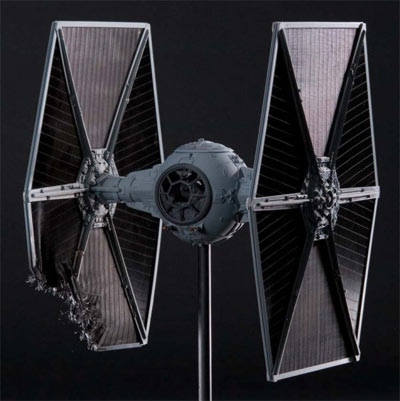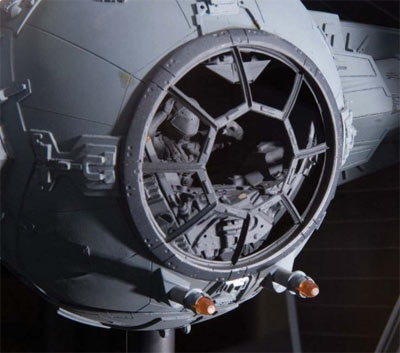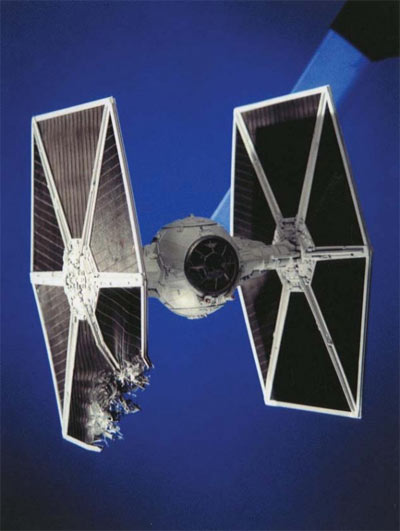Original T.I.E. Fighter for Sale: The Empire Sells Out

If you’re a well-to-do Star Wars fanboy you should know that bidding on this little goodie starts at $170,000.00 on eBay:
Original T.I.E. Fighter from Star Wars: A New Hope
“Original T.I.E. Fighter filming miniature and original camera reports from Star Wars: A New Hope. (TCF, 1977) During the nail-biting assault on the Death Star in Star Wars Episode IV: A New Hope, this is the actual filming miniature of the T.I.E. Fighter that bumps into Darth Vader’s fighter knocking him out of the trench, allowing Luke to destroy the Death Star. This historic piece is from the collection of Academy Award-winning Visual Effects wizard, Richard Edlund. The design concepts for the T.I.E. (Twin Ion Engine) Fighters of the Galactic Empire originally came from Colin Cantwell and Ralph McQuarrie. Joe Johnston, who was the visual effects art director and overall storyboard artist for the entire trilogy was very involved in the final finessing of the ships and Death Star designs.
Only four T.I.E. Fighters were built for the first Star Wars film. Grant McCune, head of the model shop, used a fairly heavy but stable resin for the body of the ship and other resins for the tinier parts. It has a central hollow aluminum knuckle with six-way threadings for top, bottom, front, back, left and right side mounting options with 11/16 in. hollow threaded rods as wiring conduits which attached to the various self-lit neon blue pylons. The hexagonal wings are created of fine expanded metal sheeting. Much of the intricate design detail was robbed from plastic model kits, then modified and affixed.
While the rebel ships appeared worn from use with dents, primer spots, oxidation and oil streaks, the Imperial Forces’ equipment was always pristine and appeared in top-notch condition. The corner of the right wing in this fighter was purposely distressed to exhibit the damage resulting from the collision with Vader’s ship; however, this model was also used in its pristine state in other sequences of the film. Included are two original camera reports, dated December 15, 1976, describing the technical details of the shooting day on which this model was filmed. The scene is labeled “417” and entitled, “Vader Wanks Out”; “Edlund” is listed as the cameraman. Also included is a color image of this model on its rigging in front of a blue screen as it was shot for the film.”
















